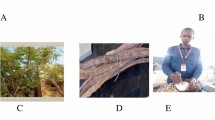Abstract
Enhanced coagulation is one of the major methods to control disinfection by-products (DBPs) in water treatment process. Coagulation pH is an important factor that affects the enhanced coagulation. Recently, many studies focus on the coagulation effects and mechanisms, and few researchers studied the properties of flocs formed under different coagulation pH. Two inorganic polymer coagulants, polyferric silicate sulphate (PFSS) and polyferric sulphate (PFS), were used in Yellow River water treatment. The influence of pH on coagulation effect was investigated under the optimum dosage, and the results show that both coagulants gave excellent organism removal efficiency when pH was 5.50. According to the variation of zeta potential in coagulation process, coagulation mechanisms of the coagulants were analyzed. An on-line laser scatter instrument was used to record the development of floc sizes during the coagulation period. For PFSS, pH exerted great influence on floc growth rates but little influence on formed floc sizes. In PFS coagulation process, when pH was 4.00, PFS flocs did not reach the steady-state during the whole coagulation period, while little difference was observed in floc formation when pH was 5.50 and above. The preformed flocs were exposed to strong shear force, and the variation of floc sizes was determined to evaluate the influence of pH on floc strength and re-growth capability. In comparison of the two coagulants, PFS flocs had higher floc strength and better recovery capability when pH was 4.00, while PFSS flocs had higher floc strength but weaker recovery capability when pH was 5.50 and above.
Similar content being viewed by others
References
Pontius F W. Regulations in 2000 and beyond. J Am Water Works Assoc, 2000, 92: 40–54
Lu G J, Huang Z C, Duan J H. Principle and application for a new method of high effective strengthen flocculation (in Chinese). J Tsinghua Univ (Sci & Technol), 2000, 40: 114–116
Li F T. Progress of inorganic coagulant-poly ferric sulfate in China (in Chinese). Industrial Water Treatment, 2002, 22: 5–8
Wang D S, Tang H X. Cogulation behavior of new IPE-PFSi (in Chinese). Acta Scientiae Circumstantiae, 2001, 21: 37–42
Gao B Y, Song Y H, Yue Q Y. Performance of polysilicic ferric sulfate coagulant (in Chinese). Environ Sci, 1993, 7: 46–48
Zhang S, Xie S G, Zhang X J, et al. The study progress of the control of natural organic matter in raw water by enhanced coagulation (in Chinese). Tech Equip Environ Pollut Control, 2003, 4: 19–22
Kimberly B A, Abbaszadegan M, Ibrahim E, et al. Conventional and optimized coagulation for NOM removal. J Am Water Works Assoc, 2000, 92: 44–58
Boller M, Blaser S. Particles under stress. Water Sci Technol, 1998, 37: 9–29
Zhang Z G, Luan Z K, Zhao Y, et al. Breakage and regrowth of flocs coagulation with polyaluminum chloride (PACl) (in Chinese). Environ Sci, 2007, 28: 346–351
Yu W Z, Li G B, Xu Y P, et al. Breakage and re-growth of flocs formed by alum and PACl. Powder Technol, 2009, 189: 439–443
Sharp E L, Jarvis P, Parsons S A, et al. The impact of zeta potential on the physical properties of ferric-NOM flocs. Environ Sci Technol, 2006, 40: 3934–3940
Francois R J. Strength of aluminium hydroxide flocs. Water Res, 1987, 21: 1023–1030
Yukselen M A, Gregory J. The reversibility of floc breakage. Int J Miner Process, 2004, 73: 251–259
Wei J C, Gao B Y, Yue Q Y, et al. Comparison of coagulation behavior and floc structure characteristic of different polyferric-cationic polymer dual-coagulants in humic acid solution. Water Res, 2009, 43: 724–732
Fu Y, Yu S L, Yu Y Z, et al. Quantitative investigation on flocculation and destruction of poly-silicic-ferric (PSF) coagulant (in Chinese). Environ Sci, 2008, 29: 92–98
Tipping E, Reddy M M, Hurley M A. Modelling electrostatic and heterogeneity effects on proton dissociation from humic substances. Environ Sci Technol, 1990, 24: 1700–1705
Julien F, Güeroux B, Mazet M. Comparison of organic compounds removal by coagulation-flocculation by adsorption onto performed hydroxide flocs. Water Res, 1994, 28: 2567–2574
Jarvis P, Jefferson B, Gregory J, et al. A review of floc strength and breakage. Water Res, 2005, 39: 3121–3137
Yukselen M A, Gregory J. The effect of rapid mixing on the break-up and re-formation of flocs. J Chem Technol Biotechnol, 2004, 79: 782–788
Fu Y, Yu S L. Hydrolysis law and coagulation mechanism of poly-silicic-ferric sulfate (PSF) coagulant (in Chinese). Environ Sci, 2007, 28: 113–119
Qiu J M, Qiu Z M. The progress of iron-modified polysilicate salt flocculants (in Chinese). Jiangxi Chem Ind, 2003, 1: 1–3
Gregory D, Carlson K. Relationship of pH and floc formation kinetics to granular media filtration performance. Environ Sci Technol, 2003, 37: 1398–1403
Author information
Authors and Affiliations
Corresponding author
About this article
Cite this article
Cao, B., Gao, B., Xu, C. et al. Effects of pH on coagulation behavior and floc properties in Yellow River water treatment using ferric based coagulants. Chin. Sci. Bull. 55, 1382–1387 (2010). https://doi.org/10.1007/s11434-010-0087-5
Received:
Accepted:
Published:
Issue Date:
DOI: https://doi.org/10.1007/s11434-010-0087-5




